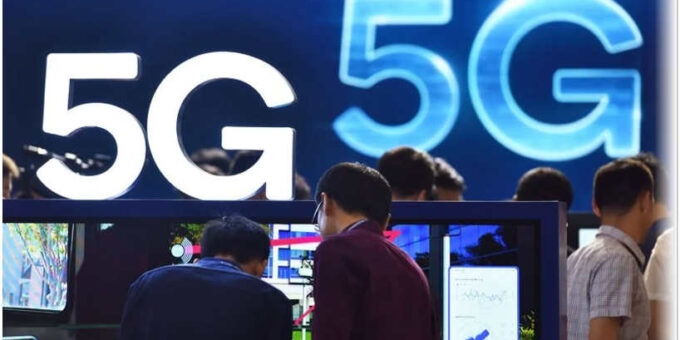
The rollout of 5G technology is set to revolutionize the way we connect to the internet and communicate with the world. Promising faster speeds, lower latency, and greater capacity than its predecessors, 5G is not just an upgrade; it represents a significant leap forward in mobile and wireless technology. As 5G continues to expand globally, its implications for various aspects of our daily lives and industries are becoming increasingly apparent. In this post, we’ll explore the future of 5G, its potential impact on connectivity, and how it will shape our everyday experiences.
Understanding 5G Technology
5G, or fifth-generation wireless technology, offers several advancements over 4G LTE, including:
- Increased Speed: 5G networks can achieve download speeds of up to 10 Gbps, significantly faster than 4G. This means you can download a full-length HD movie in seconds.
- Lower Latency: Latency refers to the delay before a transfer of data begins following an instruction. 5G can reduce latency to as low as 1 millisecond, enabling real-time communication for applications like online gaming and telemedicine.
- Enhanced Capacity: 5G networks can support a significantly higher number of devices simultaneously, making it ideal for densely populated urban areas and events where many people are connected at once.
Transforming Connectivity
- Improved Internet Access
One of the most promising aspects of 5G is its potential to enhance internet access, especially in rural and underserved areas. With its ability to deliver high-speed internet wirelessly, 5G can bridge the digital divide by providing reliable connectivity where traditional broadband options are limited. This improved access can lead to better educational opportunities, telehealth services, and overall quality of life.
- Smart Cities and Infrastructure
5G is a key enabler for the development of smart cities, where various technologies and services are interconnected through the internet. Enhanced connectivity will allow for more efficient traffic management, improved public transportation systems, and smart energy grids. For instance, traffic signals can adapt in real time based on traffic flow, reducing congestion and improving safety.
Moreover, smart sensors in public spaces can monitor air quality, noise levels, and other environmental factors, providing valuable data to city planners and residents alike.
Impact on Industries
- Healthcare Innovations
5G has the potential to revolutionize healthcare by enabling remote patient monitoring, telemedicine, and advanced medical technologies. For instance, high-definition video consultations can become the norm, allowing patients to receive care without needing to visit a hospital or clinic. Additionally, 5G can facilitate the use of augmented reality (AR) and virtual reality (VR) in training medical professionals or conducting complex surgeries remotely.
Imagine a surgeon performing a delicate operation using a VR headset, guided by a specialist located miles away—all made possible by the low latency of 5G.
- Enhanced Entertainment Experiences
The entertainment industry stands to gain significantly from 5G’s capabilities. Streaming services will benefit from faster download speeds and improved video quality, allowing viewers to access 4K and even 8K content seamlessly. Additionally, cloud gaming platforms can flourish as 5G reduces latency, enabling gamers to play demanding titles without the need for high-end hardware.
Events such as concerts and sports games can also leverage 5G technology to enhance audience experiences. For example, attendees could access immersive VR experiences, view multiple camera angles in real time, or engage with interactive content through their devices.
Daily Life Transformations
- Remote Work and Collaboration
The shift towards remote work, accelerated by the COVID-19 pandemic, has made reliable connectivity more important than ever. 5G’s faster speeds and lower latency will enhance virtual collaboration tools, making video conferences smoother and more interactive. Imagine seamlessly sharing large files, collaborating on projects in real-time, and using immersive tools without connectivity issues.
This improved connectivity will also enable more people to work from remote locations, such as cafes or parks, without sacrificing productivity.
- The Internet of Things (IoT)
5G will serve as the backbone for the Internet of Things, connecting an ever-growing number of devices and enabling them to communicate with one another. From smart home devices like thermostats and security cameras to industrial machinery, the possibilities are endless. For example, a smart refrigerator could automatically order groceries when supplies run low, or smart irrigation systems could optimize water usage based on real-time weather data.
As more devices become interconnected, the potential for automation and efficiency increases, transforming how we live and work.
Challenges and Considerations
While the promise of 5G is exciting, there are challenges and considerations to address. Privacy and security concerns are paramount as more devices become interconnected. With increased connectivity comes the risk of cyberattacks, data breaches, and unauthorized access to personal information. Ensuring robust security measures and regulations will be crucial in safeguarding users.
Additionally, the deployment of 5G infrastructure requires significant investment and collaboration among governments, businesses, and communities. Addressing issues related to coverage, especially in rural areas, and ensuring equitable access for all will be essential in maximizing the benefits of 5G technology.
Conclusion
The future of 5G holds immense potential for transforming connectivity and enhancing daily life. From revolutionizing industries like healthcare and entertainment to enabling the development of smart cities, 5G is set to reshape our experiences in profound ways. As we continue to embrace this technology, it is essential to navigate the challenges it presents thoughtfully. By prioritizing security, accessibility, and collaboration, we can harness the full power of 5G and pave the way for a more connected and efficient world.
